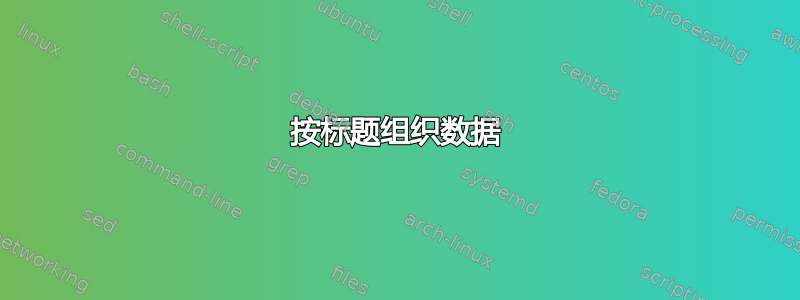
我有两个 csv 文件。
文件 1 包含标头。文件2包含数据
文件 1 格式:file1.csv
id,abc,xyz,aaa,bbb,ccc
文件 2 格式:file2.csv
id,source,value
1,abc,100
1,xyz,200
2,aaa,300
2,bbb,400
2,ccc,500
现在,我必须将 file2.csv 中的源列中的数据与 file1.csv 中的标题进行匹配,输出应如下所示
id,abc,xyz,aaa,bbb,ccc
1,100,200,null,null,null
2,null,null,300,400,500
答案1
这是一个典型的不熔化或不整洁的操作。
使用米勒(http://johnkerl.org/miller/doc)并从
id,source,value 1,abc,100 1,xyz,200 2,aaa,300 2,bbb,400 2,ccc,500
你可以跑
mlr --csv reshape -s source,value then unsparsify input.csv
并且有
id,abc,xyz,aaa,bbb,ccc 1,100,200,,, 2,,,300,400,500
答案2
无法...抗拒...线路噪音...
perl -F, -slE'if(@ARGV){say;@h=@F}elsif($.>1){$d{$F[0]}->@{@h}=($F[0],("null")x@h)unless$d{$F[0]};$d{$F[0]}{$F[1]}=$F[2]}close ARGV if eof}END{say$d{$_}->@{@h}for keys%d' -- -,=, file{1,2}.csv
或者(某种程度上)更明智的俏皮话
perl -F, -lane '
if (@ARGV) {print; @sources = @F[1..$#F]} # the first file
elsif ($. > 1) { # the 2nd file, minus the header
$data{$F[0]}->@{@sources} = ("null") x @sources unless $data{$F[0]};
$data{$F[0]}{$F[1]} = $F[2];
}
close ARGV if eof; # reset $. for each new file
} END {
$, = ",";
print $_, $data{$_}->@{@sources} for sort keys %data
' file1.csv file2.csv
或者,这是“combine.pl”
#!/usr/bin/env perl
use v5.22;
use Path::Tiny; # convenience module from CPAN
# read the header from the first file
my $file = path("file1.csv");
my @lines = $file->lines;
my $header = $lines[0];
chomp $header;
my @sources = split /,/, $header;
# read the data from the second file
$file = path("file2.csv");
chomp( @lines = $file->lines );
shift @lines; # ignore the header
my %data;
for my $line (@lines) {
my ($id, $source, $value) = split /,/, $line, 3;
if (not exists $data{$id}) {
# initialize the output data for a new id
$data{$id}->@{ @sources } = ($id, ("null") x scalar(@sources));
}
# and store this value
$data{$id}{$source} = $value;
}
# output the results
say $header;
$, = ",";
for my $id (sort {$a <=> $b} keys %data) {
say $data{$id}->@{@sources};
}
然后:perl combine.pl > output.csv
答案3
...以及不可避免的awk建议:
awk -F, '
function PRT() {printf "%d", ID # print first field: ID
for (i=2; i<=MAX; i++) printf ",%s",PF[i]?PF[i]:"null" # print popuated fields in sequence, "null" if empty
printf ORS # line feed
}
NR==FNR {print # in first file; print header
for (MAX=n=split ($0, T); n; n--) COL[T[n]] = n # split header and find column No. per header field
next # no further processing of this line
}
FNR > 2 && # skip printout for first ID (in second line of file2)
$1 != ID {PRT() # print if new ID found
split ("", PF) # empty the print array
}
{ID = $1 # retain ID
PF[COL[$2]] = $3 # collect col values into respective column
}
END {PRT() # print last IDs record
}
' file[12] # shells "pattern matching" expands resp. files
id,abc,xyz,aaa,bbb,ccc
1,100,200,null,null,null
2,null,null,300,400,500


